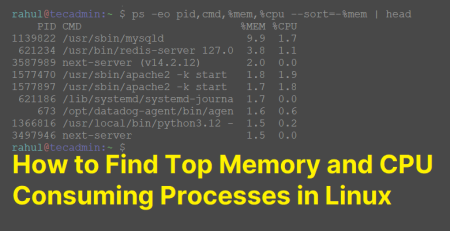A Relational Database Management System (RDBMS) is a powerful software tool that manages and maintains structured data in an organized and efficient manner. The relational model, introduced by Dr. E.F. Codd in 1970, laid the foundation for modern database management systems. This article will provide an in-depth look at RDBMS fundamentals, including key concepts, advantages, and the various components of relational databases.
Key Concepts of RDBMS
- Tables
In RDBMS, data is organized in the form of tables, which consist of rows and columns. Each row represents a unique record or instance of data, while each column represents a specific attribute or field of that data.
Advertisement - Relationships
One of the defining features of a relational database is the ability to define relationships between tables. Relationships can be one-to-one, one-to-many, or many-to-many, depending on the cardinality between the tables involved.
- Primary Keys
A primary key is a unique identifier for each record within a table. Primary keys ensure that there are no duplicate records and enable efficient retrieval of data.
- Foreign Keys
Foreign keys are used to establish relationships between tables. A foreign key in one table refers to the primary key of another table, linking the two tables together.
- Normalization
Normalization is the process of organizing data in a database to minimize redundancy and improve data integrity. It involves dividing a table into smaller, more manageable tables and defining relationships between them.
- SQL
Structured Query Language (SQL) is the standard language used to interact with a relational database. SQL enables users to create, read, update, and delete data, as well as manage database schema and control access to data.
Advantages of RDBMS
- Data Consistency
RDBMS ensures data consistency by implementing ACID (Atomicity, Consistency, Isolation, Durability) properties, which maintain data integrity and consistency during transactions.
- Scalability
Relational databases can be easily scaled to accommodate increasing data volume and user requirements, without compromising on performance.
- Flexibility
The relational model allows for complex queries and data manipulation, enabling users to access and analyze data in various ways.
- Security
RDBMS provides robust security features, including user authentication, access control, and data encryption, ensuring the protection of sensitive information.
Components of a Relational Database
- Data Definition Language (DDL)
DDL allows users to define, alter, or delete the structure of database objects, such as tables, views, and indexes.
- Data Manipulation Language (DML)
DML enables users to insert, update, and delete data in a database, as well as retrieve data based on specific criteria.
- Data Control Language (DCL)
DCL is used to manage access to data, by granting or revoking permissions and privileges to users.
- Transaction Control Language (TCL)
TCL allows users to manage transactions within a database, ensuring data integrity and consistency during operations.
Conclusion
A Relational Database Management System (RDBMS) is a powerful and versatile tool for organizing and managing structured data. By understanding the fundamental concepts and components of relational databases, users can harness the full potential of RDBMS to meet their data storage and retrieval needs. With the ability to maintain data consistency, scalability, flexibility, and security, RDBMS continues to be the preferred choice for many organizations worldwide.

